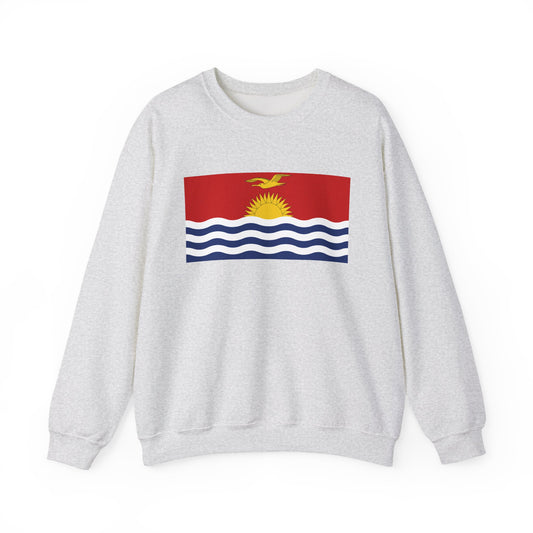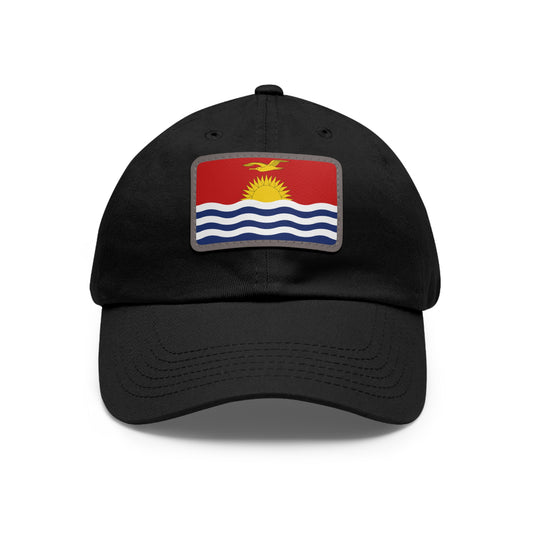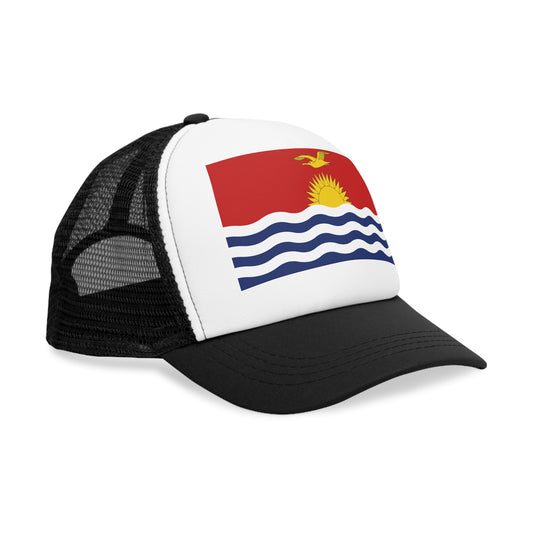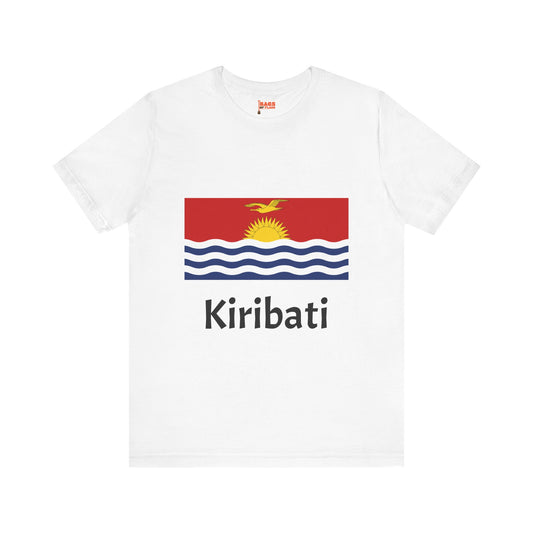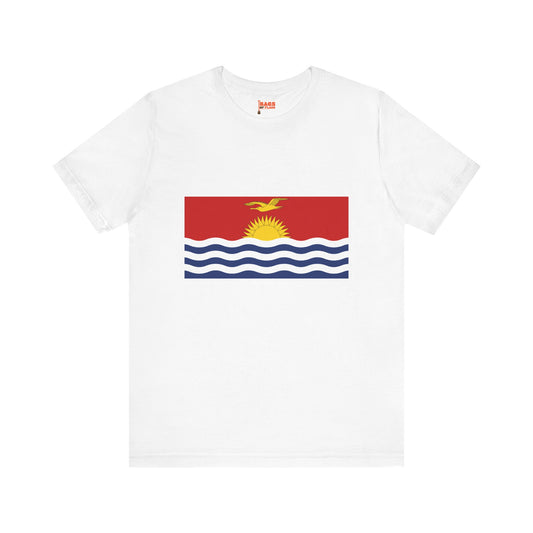-
Kiribati Flag Sweatshirt
Regular price $34.15 USDRegular priceUnit price / per -
Kiribati Sweatshirt
Regular price $34.15 USDRegular priceUnit price / per -
Kiribati Pillow
Regular price $22.65 USDRegular priceUnit price / per -
Kiribati Backpack
Regular price $59.79 USDRegular priceUnit price / per -
Kiribati Leather Patch Hat
Regular price $18.85 USDRegular priceUnit price / per -
Kiribati Mug
Regular price $11.65 USDRegular priceUnit price / per -
Kiribati Trucker Cap
Regular price $14.90 USDRegular priceUnit price / per -
Kiribati Hoodies
Regular price $34.40 USDRegular priceUnit price / per -
Kiribati T-shirts
Regular price $22.79 USDRegular priceUnit price / per -
Kiribati Flag Hoodies
Regular price $34.40 USDRegular priceUnit price / per -
Kiribati Flag on T-shirt
Regular price $22.79 USDRegular priceUnit price / per
Collection: Kiribati
The Kiribati flag symbolizes pride and identity for the people of Kiribati. Its design and colors hold significant meaning and history that reflect the nation's values and heritage. We will delve into the Kiribati flag's unique facts, historical context, symbolism, and protocols.
Overview of the Kiribati Flag

The Kiribati flag presents a visually striking design rich in meaning and symbolic of the nation's identity. Composed of a vibrant blue lower half and a red upper half, it is divided horizontally, symbolizing the country's geographical positioning and the vast Pacific Ocean surrounding it. At the heart of the flag lies a golden frigate bird in flight, soaring above a depiction of a sun with seventeen rays, positioned directly on the flag’s centerline, intersecting the horizon. The red portion of the flag represents the people's warmth wealth and determination, while the blue stands for the ocean, highlighting Kiribati's deep connection with its maritime heritage.
The frigate bird, a powerful symbol of freedom and authority in the sea-faring culture of Kiribati, represents the people’s aspirations and their mastery over the sea. Meanwhile, with its seventeen rays, the rising sun mirrors the country's optimistic outlook toward progress and prosperity, with each ray signifying one of the main islands that compose the nation. This arrangement of elements and colors together encapsulates the essence of Kiribati, portraying its history, hopes, and the indomitable spirit of its people.
Historical Context
The flag of Kiribati was officially adopted on the momentous day of July 12, 1979, marking the country's newfound independence from British colonial rule. This significant date in Kiribati's history is commemorated through the flag's design, which resulted from a national competition aimed at capturing the essence and aspirations of the nation. The introduction of the flag was a crucial step in establishing Kiribati's identity on the global stage, symbolizing a break from the colonial past and the beginning of a new, sovereign chapter. Over the years, the flag has remained unchanged, a testament to the enduring spirit and unity of the Kiribati people. Its adoption was a ceremonial act and a declaration of the country's autonomy and readiness to navigate the future as an independent nation. The story of the flag's creation and its unfaltering presence since independence illustrates the pride and resilience of the Kiribati people.
Symbolism of the Kiribati Flag

The Kiribati flag is imbued with rich symbolism that reflects the nation's culture, geography, and aspirations. The red portion symbolizes the equatorial location of Kiribati, a distinct geographic characteristic that defines the nation's climate and way of life. This vibrant color also echoes the Kiribati people's warmth and vitality, resilience, and welcoming spirit. Blue, the other dominant color, mirrors the vast Pacific Ocean that not only surrounds the islands but also plays an integral role in their history, economy, and culture. The ocean is a source of sustenance, a means of connection, and a field of exploration for the people of Kiribati, thus its prominence on the flag.
The golden frigate bird is central to the flag's design, an emblem of freedom and power. This majestic bird, capable of long-distance flights, represents the spirit of independence and the aspiration for progress that characterizes the nation. Its portrayal in full flight above the sun symbolizes the people's ambition and mastery over their environment. With its seventeen rays extending outward, the sun signifies hope, unity, and the dawn of a new era. Each ray represents one of the main islands of Kiribati, highlighting the unity and collective identity among the diverse communities within the nation. Together, these elements encapsulate the essence of Kiribati's past, present, and hopes for the future, making the flag a profound representation of the nation's soul.
Current Relevance
Today, the Kiribati flag continues to hold a place of honor and significance in the daily life and governance of the country. It is prominently featured in a wide array of national events, from independence celebrations to cultural festivals, showcasing the unity and identity of the Kiribati people. The military and various governmental bodies also utilize the flag as a powerful symbol of allegiance and national pride. In official capacities, the flag fosters a sense of belonging and reminds citizens of their shared heritage and values.
Despite the reverence for the flag, it has not been without its debates. Some national voices argue for a modern reinterpretation of the flag's symbolism to better align with Kiribati's evolving societal values and global standing. These discussions underscore the dynamic nature of national symbols, reflecting the ongoing dialogue about identity and representation in Kiribati. Yet, these conversations have remained within the flag's role as a central emblem of the country's sovereignty and spirit, illustrating its enduring relevance in traditional and contemporary contexts.
Additional Facts
In Kiribati, proper flag etiquette is deeply ingrained in the culture, reflecting a profound respect for this national symbol. It is a severe breach of protocol to allow the flag to come into contact with the ground, signifying the nation's reverence for its sovereignty and heritage. Additionally, the practice of flying the flag at half-mast is reserved strictly for times of national mourning, showcasing the flag's role in embodying the collective sentiment of the country.
Unique among Pacific Island nations, the Kiribati flag frequently appears alongside its neighbors' flags during regional summits and cultural festivities, symbolizing solidarity and shared cultural ties within the Pacific community. The process of selecting the flag's design was a collective endeavor that involved the participation of the nation's citizens, culminating in a competition that engaged the community's creativity and national pride. This participatory approach ensured that the flag genuinely represents the spirit and aspirations of Kiribati's people and fostered a strong sense of ownership and unity around this national symbol.


